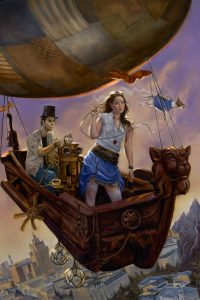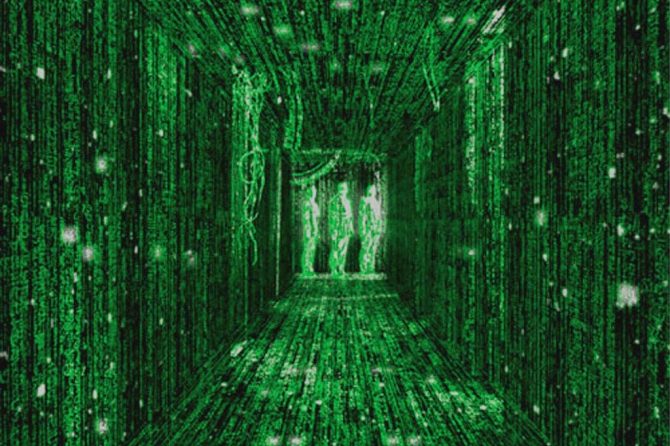With the release of the new movie OZ: The Great and Powerful this weekend, the world created by L. Frank Baum back in 1900 is getting a fresh look. Revisiting a classic is always a good thing, but with The Wizard of Oz, this can also be a dangerous undertaking.
The problem is, of course, the classic MGM film version of the novel. Released in 1939 The Wizard of Oz starred Judy Garland and very quickly became cemented in the minds of most of the population of the planet as THE definitive version. For a while any attempt to create a new version of Oz that didn’t include “Over the Rainbow” was looked on as blasphemy.
 The original edition of The Wonderful Wizard of Oz was illustrated by W. W. Denslow. His conception of the book’s characters were whimsical line drawings, but they established the look of the world.
The original edition of The Wonderful Wizard of Oz was illustrated by W. W. Denslow. His conception of the book’s characters were whimsical line drawings, but they established the look of the world.
The first book proved successful and led the way to many sequels written by Baum and eventually by other authors. These sequels were illustrated by artist John R. Neill and for many years his was the “official” look of the Land of Oz.
 John Rea Neill was born in Philadelphia in 1877. A Pennsylvania Academy of Fine Arts dropout, Neill toiled as an illustrator for the Philadelphia North American newspaper, producing comic strips and various illustrations. In 1904 he was tapped to illustrate The Marvelous Land of Oz, the second book in the series. Baum and Denslow had a falling out, so he needed a new illustrator and Neill`s pen and ink work seemed to fit the bill. Neill`s drawings were exclusively identified with the Oz books and would be for the next thirty five years.
John Rea Neill was born in Philadelphia in 1877. A Pennsylvania Academy of Fine Arts dropout, Neill toiled as an illustrator for the Philadelphia North American newspaper, producing comic strips and various illustrations. In 1904 he was tapped to illustrate The Marvelous Land of Oz, the second book in the series. Baum and Denslow had a falling out, so he needed a new illustrator and Neill`s pen and ink work seemed to fit the bill. Neill`s drawings were exclusively identified with the Oz books and would be for the next thirty five years.
Then came Metro Goldwin Meyer. The studio acquired the rights to the books and set about making their adaptation. Prior to this, the book had inspired a number of now-less-well-known stage and screen adaptations, including a profitable Broadway musical and three silent films. The 1939 film was considered innovative because of its songs, special effects, and revolutionary use of the new Technicolor.
The movie’s overwhelming popularity (and its reputation as a perennial holiday television standard) cemented its look into the minds of a generation. For decades after any adaptation that dared to strike out on its own and depict the land of Oz in any way different from the MGM version was not considered canon, if not outright blasphemous!
 Nowhere was this more evident than in 1985 when Disney released Return to Oz. This film, a sequel of sorts to the MGM version, was a non musical version that went back to John R. Neill’s original illustrations for its look. It took elements from several of the Oz sequels and presented a visually arresting new look at the land of Oz.
Nowhere was this more evident than in 1985 when Disney released Return to Oz. This film, a sequel of sorts to the MGM version, was a non musical version that went back to John R. Neill’s original illustrations for its look. It took elements from several of the Oz sequels and presented a visually arresting new look at the land of Oz.
Critics were all over this version, calling it dark and frightening. Much of the moviegoing public stayed away as well. It seemed that any version of Oz that didn’t feature “Over the Rainbow” was doomed to failure. It’s a shame because Return to Oz was a fine film with amazing design and effects work.
 Since that time there have been variations on the Oz look. Artists and writers have felt more free to adapt the work in strange, new ways. Oz variations have been cropping up more and more, with Dorothy being depicted in ways that would have made Judy Garland blush. Recent variations on Oz imagery have been produced by artists such as Greg Manchess and Lindsay Messecar.
Since that time there have been variations on the Oz look. Artists and writers have felt more free to adapt the work in strange, new ways. Oz variations have been cropping up more and more, with Dorothy being depicted in ways that would have made Judy Garland blush. Recent variations on Oz imagery have been produced by artists such as Greg Manchess and Lindsay Messecar.
Now Disney is trying it again with Oz The Great and Powerful. A prequel this time and, it seems, they are sticking closer to the MGM look than veering away from it. Nevertheless, there is much that is bound to be new in this version. After so many years perhaps we can all shed the yoke of Judy Garland and see Oz for the first time as a wondrous fantasy world that can be open to many different interpretations and depictions.
Maybe its finally time for us all to take off our emerald colored glasses.
(And just a note: I know last week I promised to continue with the topic of Pulp artists and I will do that next week. I just wanted to get this post in while it was timely with the release of the new film)
As usual, if you agree, disagree or just want to chime in, leave a comment.












What always bothered me about the original film was the question: "How could anybody in her right mind trade being the Queen of Oz for being a farmer's daughter in dust bowl Kansas during the depression?"
I mean, what's the future likely to hold for Dorothy? Marriage to some hayseed and then ten barefoot kids by the time she's 35? I can see her at 60, voice rough from smoking two packs a day, saying to her out-of-work husband: "I coulda been a Queen… A Queen, I tell ya… and I gave it up for… this crap??"